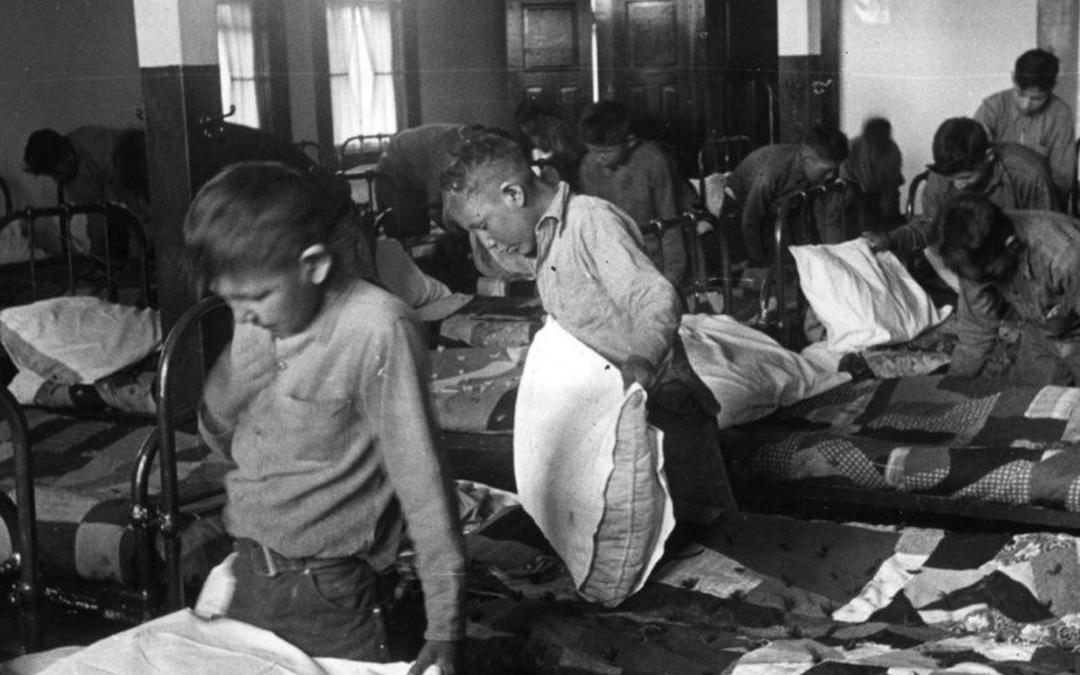Deborah Abecassis Warshawsky. An Akiva parent, Debbie has an MA and PhD in the history of Jewish Bible Interpretation from McGill University as well as a Masters in Library and Information Science (MLIS) also from McGill.
Shabbat morning  I hand my daughter a long-sleeved shell to try on under the short-sleeved shirt she (for some reason) really wants to wear to synagogue. She comes back to show me it is much too big and I tell her to take it off and choose another outfit.
I hand my daughter a long-sleeved shell to try on under the short-sleeved shirt she (for some reason) really wants to wear to synagogue. She comes back to show me it is much too big and I tell her to take it off and choose another outfit.
Two days later I find the long-sleeved shell in the laundry basket. I am SO mad.
Did she have it on for more than 1-minute? Could she not have brought it back to me? It was hanging in my closet anyhow. I would have put it away.
This was not a new problem. I was regularly pulling unworn clothes out of the laundry baskets and leaving them on their beds. My girls are required to put away their own clean laundry – therefore, even if they try on five shirts before choosing what to wear, and they put all the discarded ones in the laundry basket, and their (poor, tired) mother sorts them, loads them into the washing machine and dryer and folds them – they are still the ones who have to put them back in their drawers or closets!!!
Nonetheless, no matter what “mother logic” I tried to convey – they still preferred to throw the clean clothes into the basket (and put them away only when the folded clothes are left on their bed).
There needed to be consequences.
I ruminated all day about what I wanted to accomplish with the consequences for throwing unworn clothing into the laundry basket.
We all know our children respond best to loss of electronic privileges, but my girls don’t really have a lot of electronic time during the week. So if they leave unworn clothes for me to wash on Monday, then losing TV the following Sunday would have little impact. And chances are, by Sunday, I too would have forgotten.
Even though this behaviour is not intentionally mean or rude, it is thoughtless and lazy; I wanted them to understand how this behaviour affects my day.
This week’s parashah – Mishpatim – details many laws governing how people behave around and treat others. The verses set up hypothetical scenarios and stipulate the consequences for each situation. For example:
One who strikes a man so that he dies, shall surely be put to death. But one who did not lie in wait and God brought about his hand, I shall provide for you a place to which he shall flee.
These verses differentiate between killing someone intentionally or unintentionally. One who kills intentionally is put to death, but one who kills by accident is provided a safe place to escape from the vengeance of the dead person’s family.
In the following scenario, however, the intended consequences are not as clear:
When men will fight and they will jostle a pregnant woman and she will miscarry, but there will be no “disaster,” he [the guilty party] shall surely be penalized. The husband of the woman shall sue him, and the amount is determined by the courts. But if there will be a “disaster,” then you shall give a life in place of a life; an eye in place of an eye, a tooth in place of a tooth, a hand in place of a hand, a foot in place of a foot; a burn in place of a burn, a laceration in place of a laceration, a bruise in place of a bruise.
The rabbis understood the word “disaster” to refer to the death of the pregnant woman. In other words, if the woman miscarries but is not killed herself, then through the judges, the husband can exact recompense from the perpetrator for the (potential?) value of the baby. However, if the woman is killed, the text says, “you shall give a life in place of a life.”
There are many difficulties in this text. How did the Torah really intend for us to understand the word “disaster?” How does one assess a monetary value to a lost pregnancy? And why would a man who “jostles” a pregnant woman, while fighting with another man, and unintentionally kills her, be subject to a death penalty, when the text seems fairly clear earlier on that unintentionally killing someone does not merit death? Finally, how does the loss of an eye, tooth, hand or foot, and a burn, laceration or bruise play into this hypothetical scenario?
The concept of “a life for a life” or “an eye for an eye,” strives to achieve exact justice – that the punishment should be exactly proportionate to the injury that was inflicted. The listing here of a myriad of possible injuries is not referring directly to the scenario that precedes it, but rather is meant as a general statement of legal policy. The punishment should fit the crime.
In reality, however, only “a life for a life” can truly fulfill a law of exact equivalence for injury. As Rav Saadia Gaon explained, one cannot bruise someone to the exact degree to which he bruised another. Similarly, with a burn or a laceration. Even with an eye injury, one cannot be sure the perpetrator’s eye can be injured in the exact same way, to the exact same degree, with the exact element of permanent disability that he injured the victim.
The rabbis and most commentators believe that “an eye for an eye” was never intended to be fulfilled or understood literally, and they assigned monetary compensation for the practical application of these laws.
The question remains, though, if the text did not intend for us to enforce compensatory physical assault, what are we meant to learn from the extended litany of “an eye in place of an eye, a tooth in place of a tooth, a hand in place of a hand, a foot in place of a foot; a burn in place of a burn, a laceration in place of a laceration, a bruise in place of a bruise.”
The Ramban explains that this expression of exact justice teaches us that the consequences for a crime must affect the perpetrators to the extent to which they can physically feel their victim’s pain and understand the loss they have precipitated by their actions. Perhaps the concept appears specifically after the scenario of a pregnant woman miscarrying from being jostled and possibly being killed herself because the layers of injury and loss are both raw and complex. In a circumstance such as this, we would not want the perpetrator to simply pay a fine and move on. In a circumstance such as this, the perpetrator needs to absorb the ramifications of his actions.
Conceiving of fitting, pertinent, effective consequences is no simple task. I told my girls that the next time I found unworn clothes in their laundry baskets, the “perpetrators” would be responsible for sorting the family’s laundry on the next laundry day. A second offence would merit folding everyone’s laundry as well.
It’s not perfect. It’s turned laundry – a necessary chore – into a punishment. I am fairly certain that empathy and appreciation will not be how they feel towards me while sorting and folding.
But so far it’s working.
Shabbat Shalom.












